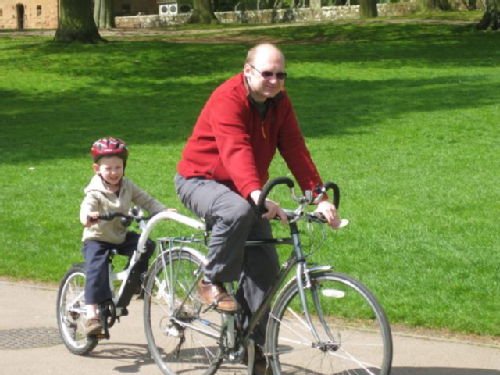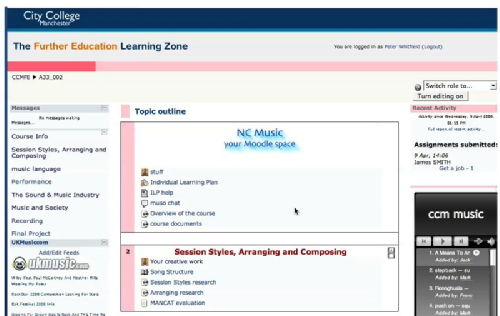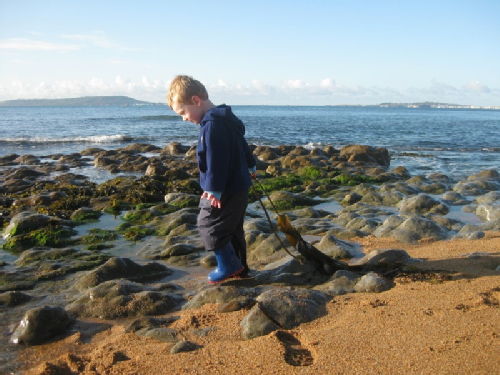Writing about web page http://www2.warwick.ac.uk/services/elearning/arts/vle
As part of my Future Platforms for Next Practice research project, I have just published a report that answers the question: what is the Warwick VLE? An up to date version can be found on the Arts E-learning pages, including links to the extensive e-learning glossary.
Here's the text...
1. What is a virtual learning environment (VLE)?
An online extension of the traditional offline learning environment.
The VLE should not be confused with the tool-set used to construct the learning environment. It is the learning environment as experienced by the student (in the case of Warwick, the VLE is not Sitebuilder, it is the sum of the web pages produced using Sitebuilder to support learning).
A VLE uses technology to provide the following efficiency gains:
- Rapid access to information – an authoritative source of facts about courses and people (dates, policies, requirements, etc).
- Efficient administration – simplified and systematised processes (such as assignment submission, tracking student activity and performance, online module registration).
- Instant access to resources – a simple mechanism for finding and using text, images, files, video, audio etc.
The VLE organises information so that it can be created, located, accessed and used by the right people at the right time. Information is organised in a meaningful way, mirroring the offline learning environment. Permissions to use information are based upon standard group memberships (department, course, module, seminar group etc).
In addition, a VLE provides facilities for enhancing the quality of learning activities in two key ways:
- Making it discursive – using discussion forums, blogs, wikis, page commenting and other techniques, the student becomes engaged in learning as a discursive, constructive and productive process.
- Making it reflective – the student is prompted to reflect upon their own knowledge, skills, understanding and progress so that they can effectively plan to improve. Various techniques are commonly used, including self-assessment tests and blogging.
2. What makes for a successful virtual learning environment?
We measure the success of a VLE by its impact in delivering the three efficiency gains and two qualitative enhancements listed above. To achieve this, certain conditions are known to be of importance:
- Relevant – the VLE should fit with the goals and structure of the traditional offline learning environment.
- Automation as far as possible – information and organisational structures should be automatically drawn from authoritative sources and re-displayed where needed.
- Control – teachers, and in some cases students, should be able to over-ride these automations as needed.
- Feature rich – with sufficient scope to construct a wide range of custom online learning activities.
- Templated – providing the ability for tutors to quickly create online learning activities from templates that instantiate common learning design patterns.
- Quality user interface – the UI must follow the principles of good design, being consistent, simple, self-evident, fast in operation, and meaningful in relation to the learning designs in the mind of the tutor.
- Supported – not simply by experts and training, but perhaps more importantly by an extensive peer-network of users.
- Reliable – students and teachers rarely get an opportunity to repeat classes (offline or online), reliability is therefore paramount.
- Refreshing and archiving - at the end of the academic year, it should be able to refresh and archive the environment ready for use with a new intake.
3. Where is the Warwick virtual learning environment?
The first principle of VLE design states that the online environment should appear as a natural extension of the offline environment.
Warwick's offline learning environment is formed from:
Devolved communities, supported by an efficient central administration.
Academic departments and courses provide the natural home for the student and their learning experience. The Warwick online learning environment extends these habitats. Every department and course has it's own distinctive set of web pages. In most cases, individual modules also have their own distinctive web presence as sub-sections or sub-sites of departments and courses. In fewer cases, seminar groups and other smaller units or organisation may have their own web presence of some sort (often a forum or a blog). These web sites are the basis for Warwick's virtual learning environment[s]. In creating department, course and module web sites, we teachers at Warwick construct their own custom virtual learning environments using the available toolset (Sitebuilder, Warwick Blogs, Warwick Forums, Quizbuilder, Formsbuilder etc).
These decentralised offline learning communities are often complemented with central provision. For example, most library provision is based in the main Library. Similarly, the process of module registration is managed through a system provided by IT Services. Academic and professional skills training is provided both centrally and within departments and courses. A well designed course, department or module web site (VLE) is used to bring these central provisions closer to the natural learning environment of the student (create a list of important links, display careers news announcements on the course homepage, deep-link to Library resources etc).
4. How is it constructed?
Most of the online learning environments in use at Warwick are constructed using the home-grown Sitebuilder web publishing system. This is a sophisticated set of tools for creating consistently structured, usable, feature rich web content. It is general purpose (i.e. for all kinds of university web site) but with features aimed specifically at teaching and research (Quizbuilder, glossary pages, database pages). It provides excellent multimedia facilities. And most importantly, it is easy to use and well supported, with around 3000 people editing content each month. Responsibility for creating online learning content is, in the Arts Faculty, devolved to teachers themselves. This may include PhD students. It is also increasingly common for undergraduates and taught postgraduates to contribute to web sites. As Sitebuilder is used for all types of web site (including PhD ePortfolios), the required skills are widely distributed amongst staff.
In assessing Sitebuilder against the 'conditions for a successful VLE' outlined in Section 2 above, we can say that it currently scores highly on all points except:
2. Automation - it is restricted by the limitations of data in admin systems.
5. Templated - it has no simple templating system.
9. Refreshing and archiving - possible, but not easy.
In addition to Sitebuilder, we have two independent tools.
Warwick Forums hosts discussion forums. Once a forum has been created (using an interface very different to that of Sitebuilder), it can be included into a Sitebuilder page.
Warwick Blogs is a very successful blogging system, providing an alternative learning environment following a very different design pattern (accumulation of content over time). It can be integrated with Sitebuilder created content through RSS and by the use of blog forms.
5. Virtual learning & research environment
The traditional Warwick offline learning environment has, as one of its principle values, an emphasis upon research led pedagogy. That is to say, even undergraduate students are expected to act as researchers (independently or as 'apprentice researchers').
This goes further than simply allowing students to comment on pages or participate in discussions. Warwick's online learning environment takes this goal further. Students are able to create their own online research environments, frequently using Warwick Blogs, and in some cases using Sitebuilder to create their own student project or eportfolio sub-sites. This has great benefits.
In this way, Warwick goes beyond providing a VLE. It would be better understood as a virtual learning and research environment (VLRE).
For a more comprehensive survey of the Warwick VLRE, see the Complete Guide to E-learning for the Arts Faculty.
6. Future challenges
Seven significant challenges must be considered:
- Spiralling complexity - having enabled thousands of people to create VLE content with relatively little enforced structure, complexity and diversity may become overwhelming.
- Skills - many staff can do simple operations, but lack the wider and deeper understanding necessary for using the provisions efficiently and to their full potential.
- Innovative pedagogies - new ways of teaching and learning, such as the Open Space approach.
- Connecting the online and the offline - looking for better ways to make the online accessible during a wider range of offline learning activities.
- Connecting with popular external systems - for example, Facebook.
- Globalisation - using the VLRE to extend our global reach.
- Working with partners - allowing partners from outside to work within the VLRE.
More research will be forthcoming soon.



















 Robert O'Toole
Robert O'Toole

 Please wait - comments are loading
Please wait - comments are loading




















